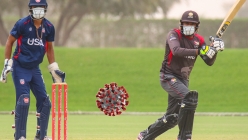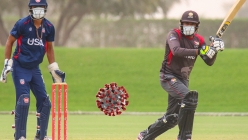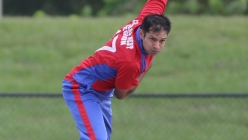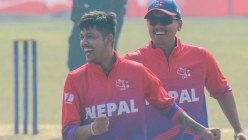USA Cricket: 2013 ICC Americas Division One T20 Report Card Part 1 - Team Grades
2013 Apr 09 by DreamCricket USA
Four USA partnership records in T20 cricket were either tied or broken during the tournament. The first wicket partnership of 155 against Cayman Islands by Taylor and Akeem Dodson not only broke the previous opening stand record of 78 by Taylor and Aditya Mishra against Scotland in 2012 but also became the highest USA T20 partnership for any wicket.
Now, you can get all the USA Cricket updates via Facebook. Also follow us on Twitter via @dreamcricket
By Peter Della Penna (on Twitter)
Batting – A-: Steven Taylor was responsible for 32.7% of USA’s runs at the tournament and finished as the leading scorer in the event with 413 runs, but it would be unfair to say that USA relied solely on him. Just about everyone chipped in at some point to help USA post sizeable totals. The team produced five of the six biggest first innings totals in the tournament by any side including a USA T20 record of 198 for 1 against Cayman Islands.
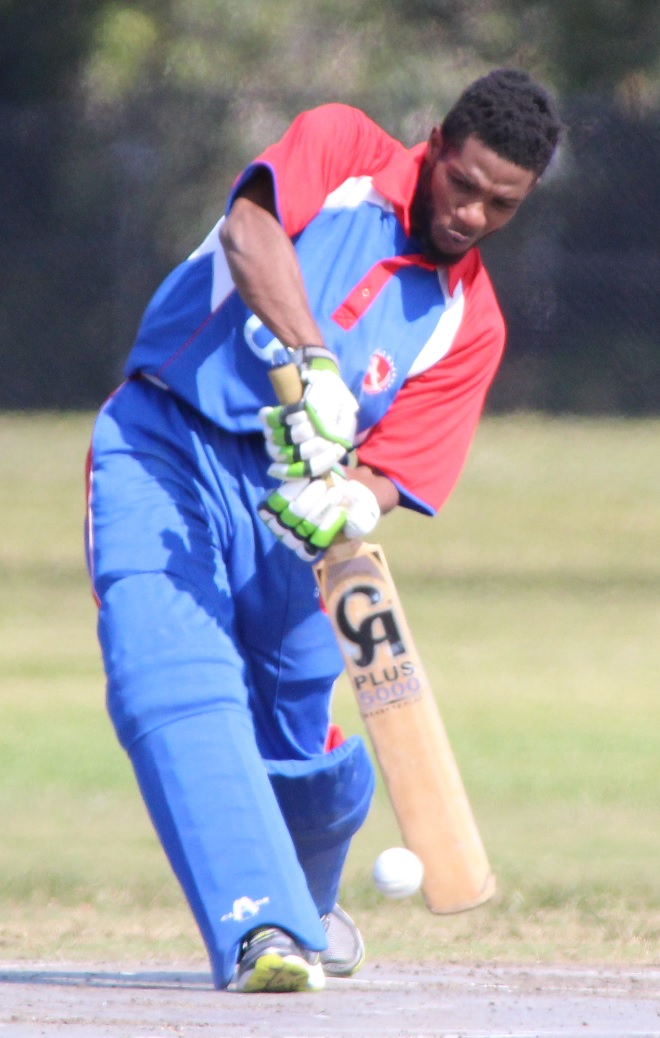 Four USA partnership records in T20 cricket were either tied or broken during the tournament. The first wicket partnership of 155 against Cayman Islands by Taylor and Akeem Dodson not only broke the previous opening stand record of 78 by Taylor and Aditya Mishra against Scotland in 2012 but also became the highest USA T20 partnership for any wicket, breaking the previous record of 99* by Orlando Baker and Aditya Thyagarajan for the seventh wicket against Ireland in 2010. Overall USA had one century stand and eight half-century stands.
Four USA partnership records in T20 cricket were either tied or broken during the tournament. The first wicket partnership of 155 against Cayman Islands by Taylor and Akeem Dodson not only broke the previous opening stand record of 78 by Taylor and Aditya Mishra against Scotland in 2012 but also became the highest USA T20 partnership for any wicket, breaking the previous record of 99* by Orlando Baker and Aditya Thyagarajan for the seventh wicket against Ireland in 2010. Overall USA had one century stand and eight half-century stands.
Image (right) - Akeem Dodson provided stability for USA both in the batting order and behind the stumps in the field. [Courtesy: Peter Della Penna/DreamCricket.com]
Taylor scored USA’s first two centuries in Twenty20 cricket and also had a 95 against Cayman Islands. Two other half-centuries came from Dodson and Ryan Corns. Dodson in particular provided a big boost to the team playing half his games at the number three position. In USA’s last T20 competition at the 2012 ICC World Twenty20 Qualifier, the number three position averaged 6.29 during the seven-game group stage and 10.33 overall. In this tournament, USA’s number three position averaged 28.67, a marked improvement. It allowed the momentum from USA’s opening partnerships to carry on instead of stalling like it did so often in the UAE. That stability generally carried on down the order. USA’s 10th and 11th batsmen were never used during the tournament and only once did the number nine appear, facing zero deliveries in the first showdown with Bermuda.
Bowling – B-: USA’s bowlers were only able to claim 45 out of 80 possible wickets in the eight matches during the tournament, second behind Bermuda’s 47. Even if the pitches were batsmen friendly, it shows that USA will struggle to take wickets using the same lineup later in the year in the UAE at the ICC World Twenty20 Qualifier unless one or two reinforcements are brought in such as Muhammad Ghous and Timroy Allen.
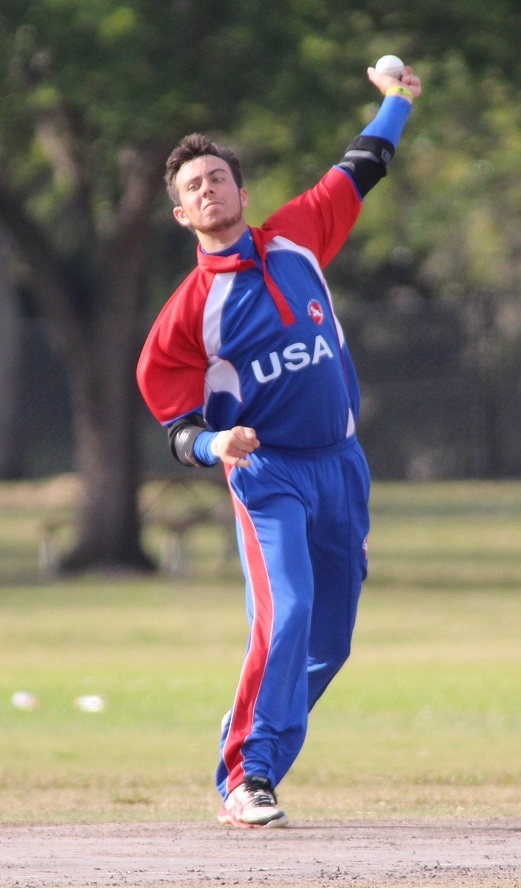 Curiously, USA struggled most once all the hard labor had been done removing the top and middle order. Once USA got five men out, they often found it hard to break into the tail and they were never able to bowl a side completely out. The closest they came was in both games against Bermuda and the second time around against Bahamas, finishing each contest with the opponent eight wickets down.
Curiously, USA struggled most once all the hard labor had been done removing the top and middle order. Once USA got five men out, they often found it hard to break into the tail and they were never able to bowl a side completely out. The closest they came was in both games against Bermuda and the second time around against Bahamas, finishing each contest with the opponent eight wickets down.
Image (left) - Ryan Corns was USA's leading wicket-taker at the 2013 ICC Americas Division One Twenty20 tournament with 10 in seven matches. [Courtesy: Peter Della Penna/DreamCricket.com]
USA did do a fairly good job of preventing partnerships from developing and batsmen found it hard to get set. USA only allowed three half-century stands during the tournament, with the best being 62 by Marc Taylor and Julio Jemison of the Bahamas. However, two of those three 50+ stands came in opening partnerships, a sign USA’s new ball bowlers were not incisive enough to get early breakthroughs. The opposition’s opening stand averaged 29.5 runs across 4.4 overs. By comparison, the opposition’s average opening partnership at the 2012 ICC World Twenty20 Qualifier in the UAE lasted 2.1 overs for 16.44 runs and that was against a much higher standard of competition.
USA’s leading wicket-taker at the ICC Americas Division One Twenty20 tournament on the same ground in Florida two years ago took 13 wickets in five games. This time around the best came from Corns who took 10 in seven games. USA’s bowlers need to be much sharper in the UAE later this year, but they also need much better support from their fielders too.
Fielding – D: USA left 20 chances out on the table across eight games: 2 very obvious missed runouts, 2 missed stumpings and 16 dropped chances. On average, opposition batsmen scored 15.64 runs after the initial missed chance and on the whole USA’s opponents scored an additional 27.38 runs per game following missed chances in the field. USA had 18 missed chances across nine games last year at the ICC World Twenty20 Qualifier that cost them an average of 37.2 runs per game and 18.6 after the initial drop. More than anything else it is what held USA back from winning more matches at the global qualifier last year and the evidence in Florida last month suggests that nothing has been done to raise standards.
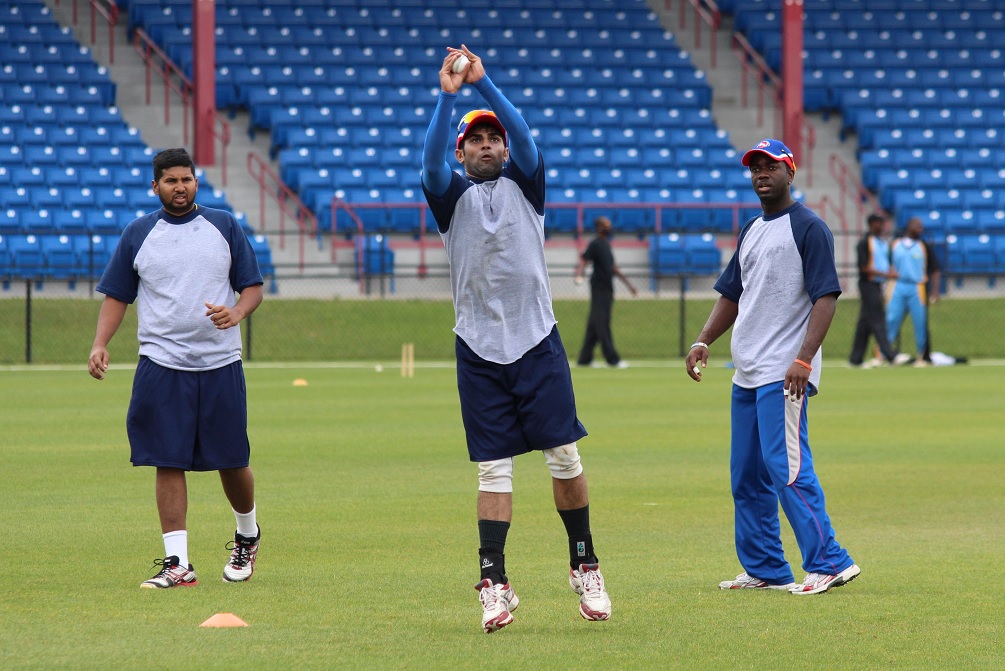
Image (above) - Japen Patel takes a catch during training. USA's fielders struggled to transfer the hard work done in training sessions into holding onto their chances during matches. [Courtesy: Peter Della Penna/DreamCricket.com]
The lone bright spot was the fact that USA pulled off 10 runouts in the field, six more than they accomplished in the UAE last year. A large amount of credit for that must go to Dodson, who made quite an impression with his catlike reactions getting out from behind the stumps to prevent runs when the ball was nudged toward point or square leg. He pulled off two brilliant runouts singlehandedly and also combined with a teammate on three others.
Aside from that though, the overall standard of catching was below average. Just as worrisome was the number of misfields USA had along the ground and runs conceded via overthrows with wild relays or unnecessary aims at the stumps exacerbated by poor backing up. This is the easiest area of USA’s on field disciplines to fix yet it is constantly the one that the team struggles most to get right.
Fitness – B: For having to play the first seven matches inside five days, USA’s squad held up surprisingly well in the Florida heat. Three players got injured during the tournament, but only one was serious enough that it required a replacement player to come in.
By the end of the tournament though it appeared the grind finally caught up with USA. Even after a day off, they still managed to miss five chances in the field in their final match of the tournament against Cayman Islands and much of that could be put down to sluggishness.
When the schedule came out for the 2012 ICC World Twenty20 Qualifier and all teams were penciled in for seven group matches in eight days, the hope was that it would be a one-off anomaly. Unfortunately the schedule for this year’s ICC Americas Division One tournament showed that cramped schedules for Twenty20 tournaments could become the wave of the future for Associates at the regional and global level.
USA ran out of gas toward the end of the global qualifier in the UAE last year. Last month in Florida, USA seemed to pace themselves much better but the physical and mental strain was not as intense as it would be against a higher level of opposition. Hopefully though, since the nucleus of the squad has gone through the rigors of a packed Twenty20 tournament schedule twice now, they should be better prepared for the physical and mental toll the matches will take on them later in the year at the 2013 ICC World Twenty20 Qualifier.
[Views expressed in this article are those of the author who was present at all of the team's matches during the 2013 ICC Americas Division One Twenty20 tournament in Florida.]

